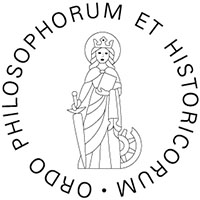
Historically Grown
The Faculty of Humanities and Social Sciences at the University of Basel developed from the medieval Faculty of Arts (facultas artium). From the 15th century onwards, students were trained here in the liberal arts (artes liberales) and prepared for entry into one of the three main faculties of theology, law and medicine. In the 17th century, the name "Faculty of Philosophy" was coined, but it was not until the Basel University Act of 1818 that it was given equal organizational opportunities to the other faculties and relieved of its propaedeutic function.
At that time, the faculty comprised natural sciences and humanities subjects such as grammar, mathematics, physics and philosophy. Over the course of the 19th century, the disciplines became increasingly differentiated and with the University Act of 1937, the institutional division into the Faculty of Humanities and Social Sciences and the Faculty of Science took place. This university structure remained in place until the 1990s. In 1997, the Faculty of Business and Economics separated from the Faculty of Humanities and Social Sciences and constituted itself as an independent faculty; in 2003, the Faculty of Psychology was founded and in 2015 - together with the FHNW - the Institute of Educational Sciences.
Differentiation and new development of disciplines
The current composition of subjects in the Faculty of Humanities and Social Sciences is the result of the internal differentiation of subjects that have always been part of the Faculty's canon: for example, psychology, sociology and education emerged from philosophy. On the other hand, new subjects such as media studies, gender studies, African studies, sustainability research and urban studies were created as a result of academic and social developments. In recent years, the subject portfolio has also increasingly changed due to strategic and profile-building plans. The most recent example of such further development is the establishment of a new subject area in Digital Humanities. Over the decades, the Faculty has developed into a broadly diversified combination of humanities, cultural and social science disciplines, which - with the exception of the aforementioned separation of economics, psychology and educational science - has remained a university unit.
With their «Bachelor of Arts» and «Master of Arts» degrees from the Faculty of Humanities and Social Sciences, graduates carry a piece of history with them: the titles awarded at the Faculty of Arts were already «Baccalaureus artium» and «Magister artium».
In the faculty logo: The patron saint of artists
Like almost all medieval artist faculties, the University of Basel's faculty also had St. Catherine of Alexandria, who was considered the patron saint of artists, in its seal. Her motif can still be found in the faculty logo today. However, it no longer corresponds to the original seal image, but uses a more recent depiction, which was finally transformed into its current form by the Basel agency New ID in 2015.

Quick Links
